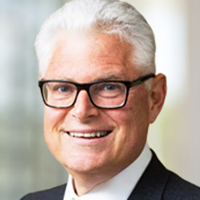
A symposium I put together a few years ago painted a bleak picture for retirement readiness in America. The Honorable Joshua Gotbaum, former head of the Public Benefit Guaranty Corp. and current chair of the Maryland$aves program, demonstrated during his presentation that despite all the efforts over the last half century, too many working Americans still do not have access to workplace retirement plans.
In fact, a recent T. Rowe Price study, notes almost 40% of Americans don’t have access to a defined contribution plan, and most of those people work at small companies.
Many who once had access to a defined benefit plan now have access to a defined contribution plan. Complicating matters is that very few advisors, even some who specialize in this niche part of our profession, realize the true opportunity before us.
From advisors who dabble with 401(k) plans to those who make it their life’s work, many leave off the table the options and opportunities to be transformative. Many advisors tend to unintentionally set up stagnant plans that result in lackluster participant outcomes and slow growth of assets under management. However, if you think differently, you can fundamentally transform your entire practice and grow wealth management assets, provide risk management solutions for business owners, and strengthen your relationships with centers of influence, including your clients’ CPAs and legal counsel.
In fact, in coming articles, I will explain specific cases showing how advisors who worked with experts to create customized 401(k) plans for clients dramatically increased their compensation and AUM over five years.
When Plan Participants Opt Out
If an ERISA plan is implemented properly, participation rates will increase and the percentage of participants on track for retirement will increase. And as a result, your assets under management will be profoundly greater.
In my practice, I have noted two key pivot points where participants opt out. One is during enrollment or re-enrollment. The other is during times of market turmoil. Participants who work hard for their money may move their money to cash, or worse, stop participating entirely when markets get volatile.
Make An Outsized Impact
Most financial professionals realize that the wealth management and financial planning work we do with our clients has an outsized impact on their futures. Many do not realize how we can have a similar impact through our management of 401(k) plans. I am excited to share information in future columns to help enhance your leadership in your communities. Information you can provide your clients that very few see in our profession.
Do You Know … ?
1. You can tie the 401(k) plan to the corporate culture.
There are key questions to ask to tap into a business owner’s excitement around their business. These questions are no different than fact finding questions around a financial plan.
Tip: A series of questions around the profitability of the firm may establish opportunities around the three layers of the retirement plan cake. The three layers are the 401(k), profit sharing and cash balance plans.
2. A business owner can select an employee to receive a larger profit-sharing contribution without other participants receiving similar contributions.
We will share what needs to be included in a plan document so you can effectively tie the plan to the objectives of the business owner. Do you want to keep with an example, or ditch?
- Tip: Understanding the culture of a company makes ERISA far more effective, at a much lower out of pocket cost than the 401(k) profession realizes.
3. A cash balance plan is not just for small companies with 15 or fewer employees.
I will share tax and regulatory incentives. Our marketplace is significant. According to the Small Business and Entrepreneurship Council, there are 6.1 million businesses, and 98.1% of those businesses have 100 or fewer employees.
- Tip: Understanding the interaction of various ERISA plans will greatly enhance the success of the plan and your practice and allow you to apply cash balance plans to companies up to 100 employees per shareholder, member, or partner.
4. Include target-date funds in a plan to reduce risk for participants close to retirement.
Target-date funds are essential today, but they aren’t created equal. Educating plan sponsors on the risks of certain funds, especially for participants within five or 10 years of retirement. By doing so, you will help companies make retirement-plan choices that are in the best interest of their employees.
- Tip: Some target date funds may attempt to get more returns by adding a significant sleeve of junk bonds to the bond sleeve.
5. Pay close attention to the plan document.
The IRS requires every 401(k) plan to have a written document that outlines how the plan will be operated. Provisions included or excluded from the plan document can significantly increase participation and retirement outcomes. For example, a document that allows the employer to automatically enroll workers and make matching contributions for them is likely to increase participation. A plan that excludes a provision that employees complete one year of service before they can participate might also increase enrollment. (The IRS says 401(k) plans cannot require more than one year of service for participation.) .
- Tip: By going through a process up front, you will make sure unintended consequences do not occur. It takes time to set up a plan, and you want to communicate clearly with your clients so they don’t make incorrect assumptions. As an advisor, you need to make sure the plan sponsor clearly understands the plan document. I am happy to give you input on creating optimal client-advisor communications.
- Tip: Perhaps the most important update during the plan restatement period is adding an automatic enrollment feature. As state IRA programs have demonstrated, 75% to 100% enrollment is achieved when this feature is utilized.
6. Partnering with advisors who have unique backgrounds and experiences from yours adds significant value to the owners of businesses with 401 (k) plans.
- Tip: Creating teams within your organizations can create outsized results. This may be counter to the culture of our profession, as many establish a successful business through shear grit and determination. Leveraging expertise and talent presents an opportunity to those participating, as well as the managing partner of the firm.
- Tip: Creating the proper ERISA plan strategy, the business owner(s) of the company can have significant tax deductions that may exceed $500,000 under the right circumstances. To be sure, coordination with the client’s third-party administrator and CPA are critical.
Some History
My passion for ERISA plans goes back to the event that triggered the creation of ERISA. My dad’s family was a low-income, blue-collar, midwestern family out of South Bend, Indiana, the home of Studebaker. When my dad was young and in school, he had various jobs including a newspaper route and working on the golf course to help put cabbage soup on the table for dinner. My grandfather put asbestos pads on brake housings at Bendix. Back in my grandfather’s day, there were company defined pension plans, and while these plans seemed secure, they were unfortunately not protected.
I remember hearing my grandparents’ disdain for Studebaker when I was 5 years old because their friends lost their retirement pensions when Studebaker terminated its employee pension plan. And as a 5-year-old, I internalized the notion that a company failed and people who worked their lifetime had to work for the rest of their lives because they had no retirement savings. Quite stunning to a 5-year-old.
In response to the termination of Studebaker’s retirement plan, President John F. Kennedy established in 1962 the President’s Committee on Corporate Pension Funds to study such funds. The eventual outcome was the Employee Retirement Income Security Act (ERISA) of 1974; Section 401(k) followed in 1981.
As a 28-year-old CFO in 1988, my first order of business was to set up a 401(k) plan for one of America’s largest jewelry companies. I spent time with each employee going over the plan details, and they all participated. A graduate gemologist was reluctant to participate in the plan; he could not see the pathway forward by saving for his retirement. He didn’t feel he made enough to buy a home, much less save for retirement. I spent one hour and shared with him what could be possible if he saved.
Years later, when I was CFO of a 31-location medical clinic, I reconnected with him. He shared with me that our one-hour meeting changed his life. He followed my suggestions and began a lifetime retirement savings plan, achieving what he felt would have been impossible. As I left his office, I realized that while I enjoyed turning companies around, it was time to shift my dedication from serving one company to as many companies and individuals as I could through financial planning.
What to Expect from My Column
From time to time, I will share breaking information around taxation, business pointers and books that nourish the mind. I have been involved with financial literacy for over 20 years at both the California Society of Certified Public Accountants and the Financial Literacy Commission at the AICPA. I’ve written many other articles for numerous publications. My hope is that my articles, including the ones published by Rethinking65, are leading to an appreciation of people who save through retirement plans. My ultimate goal is to help as many people as I can be retirement ready
The good news is that the retirement success needle is moving for the better. In part this is due to the success of Katie Selenski, Courtney Eccles, and Mathew Parker, each spearheaded the creation of the state IRA programs in California, Illinois, and Oregon for those who do not have a company retirement plan.
The reality is that each advisor who is in the ERISA marketplace holds the keys to a retirement ready nation. If you haven’t added this line of business, I would highly encourage that you do so.
Your understanding and implementation of well-conceived retirement plans can change lives. Remember, there are 6.1 million businesses in America. There’s plenty of useful information to share your clients. Collaborate with them to change lives. By implementing simple steps, you will have an outsized impact on your local communities.
And by changing how you handle this segment of your business, your plans that have been stagnant for years could increase assets under management by 1,000%.
Imagine what that means for you and the value of your practice.
Most important, you have the opportunity to play an important role in transforming diverse, minority, and low-income communities into a retirement ready nation!
Leonard C. Wright, CPA/PFS, CGMA, AIF, CFP, CLU, ChFC is the current chair of the Member Retirement Plan Committee at the Association of International Certified Professional Accountants (AICPA). His mission is to create clarity around the opportunities ERISA plans can provide to business owners, key employees and all plan participants who help them grow their businesses. He has clients across the U.S. His team’s mission statement is “Working together to achieve financial success through understanding, education, and action.”







